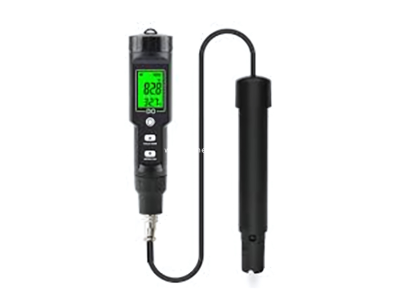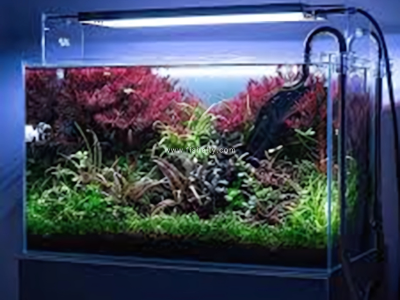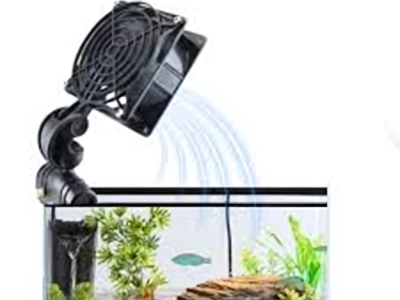Summer Care Guide: Protect Your Aquarium Fish Effectively
Learn how to protect your aquarium fish during summer with expert tips on water temperature control, stress prevention, and essential cooling tools.
Table of Contents
- Why Summer Can Be Hazardous for Aquarium Fish
- Dos and Don'ts for Summer Aquarium Care
- Fish That Are Sensitive to Heat
- How to Keep Aquarium Temperature Stable in Summer
- Top Tools to Use for Summer Fish Care
- More Tips to Beat the Heat
- Faq
- Conclusion
When summer arrives, the temperature outside is not the only thing that starts to rise - your aquarium water temperature can do the same in a very short time. This change can be harmful to your fish, causing them stress, illness, or even death if not properly addressed. Your fish are not just pets - they're family. So, here's a complete guide to assist you in protecting your aquarium and providing an ideal environment during those hot summer days.
Why Summer Can Be Hazardous for Aquarium Fish
Fish are ectothermic, and their body temperature is controlled by the temperature of the surrounding water. During summer, room temperatures can be higher than the comfort zone for most species, particularly coldwater and temperate fish.
Major Dangers of High Aquarium Temperatures:
Lower Oxygen Levels: Warm water contains less dissolved oxygen, stressing fish.

Higher Metabolic Rate: Fish are more active, consuming more oxygen and requiring more food.
Suppressed Immunity: Heat stress compromises their immune system, making them more susceptible to disease.
Algae Blooms: Increased heat and light promote excessive algae growth.

Toxic Buildup: Ammonia toxicity increases in warm water.

Possible Death: Extreme heat can cause fish to suffocate or get heatstroke.

That is why vigilance and proactive care are necessary during warmer months.
Dos and Don'ts for Summer Aquarium Care
DOs (Recommended)
Check Temperature Twice Daily
Utilize a digital aquarium temperature and record measures in the mornings and evenings.

Enhance Aeration
Insert an air pump or place a hang-on-back filter which agitates the surface to supplement oxygen.

Apply Cooling Solutions
Employ an aquarium cooling fan to small configurations or purchase a chiller for medium-sized tanks.
Restrict Light Exposure
Light emits heat. Lower the photoperiods or shut off during sunny hours.
Replace 10–15% water weekly with lukewarm (not cold) dechlorinated water

Use Timers
Program your lighting system to minimize manual adjustment and prevent overheating.

Open the Lid Slightly
Allow for heat escape but prevent fish jumping or pets/kids accessing the tank.

DON'Ts (Warnings)
Avoid Placing Tanks Near Heat Sources
Place tanks away from windows, ovens, heaters, and electronics.
Don't Add Ice Cubes Directly
Ice shocks fish and alters water chemistry. Utilize sealed ice packs or frozen bottles.

Don't Overfeed
Food left in tanks spoils quicker at high water temperatures, lowering water quality.

Don't Ignore Stress Signals
Look out for gasping, spasmodic swimming, listlessness, or loss of appetite-indications your fish are overheated.

Fish That Are Sensitive to Heat
Some species tolerate heat better than others. The following fish are particularly vulnerable during the summer:
| Fish Type | Ideal Temp Range | Heat Risk |
| Goldfish | 18–22°C | High |
| White Cloud Mountain Minnow | 16–22°C | High |
| Fancy Guppies | 22–26°C | Moderate |
| Betta Fish | 24–28°C | High risk above 30°C |
| Arowana | 24–30°C | Risky above 31°C |
| Discus | 28–30°C | Very sensitive to fluctuations |
Note: Goldfish and Minnows are coldwater fish. It’s best to place their tanks in basements or air-conditioned rooms during summer.
How to Keep Aquarium Temperature Stable in Summer
Holding water temperature in check isn't so much about responding to peaks—it's prevention and habit.
Proven Cooling Strategy:
Utilize a Cooling Fan
Example: Hygger Aquarium Fan – budget and efficient.

Install an Aquarium Chiller
For over 100L tanks, an HC Series chiller by Hailea gives tight control.
Float Frozen Water Bottles
Sealed frozen bottles floated inside the tank; take them out after some minutes to not overcool the water.
Control Room Climate
Put your aquarium in the house's lowest-temperature corner, use curtains, and place it away from the sun's rays.
Add Live Plants
They are encouraging oxygen production and reduce stress due to realistic living environments.

Automate Monitoring
Equipment like Inkbird temperature controllers can alert you if temps get out of range.

Top Tools to Use for Summer Fish Care
| Tool | Purpose | Trusted Brands |
| Digital Thermometer | Check water temperature | Fluval, Inkbird |
| Aquarium Cooling Fan | Reduce water heat | Hygger, ISTA |
| Aquarium Chiller | Cool large tanks | Hailea |
| Air Pump | Improve aeration | Tetra, Eheim |
| Smart Controller | Monitor & auto-control | Inkbird ITC-308S |
| Aquarium Test Kit | Monitor water parameters | API Master Kit |
More Tips to Beat the Heat
• Replace evaporated water daily with dechlorinated cool water.
• Observe fish activity closely—early action saves lives.

• Offer small amounts to avoid waste buildup.

• Store an emergency ice bottle in the freezer—just in case.
• Don't deep clean during a heatwave—stress and unstable water parameters can kill when fish are already compromised.
Faq
1. Why is my aquarium water getting so warm in summer?
During summer, room temperatures rise and so does the temperature of your aquarium water. Since fish are ectothermic, they’re directly affected by the water temperature, which can rise quickly if not managed properly.
2. What temperature is too hot for aquarium fish?
Anything above 28–30°C (82–86°F) can be dangerous for many fish species. Some fish like goldfish or minnows prefer cooler water, so even 26°C might be too much for them.
3. How can I tell if my fish are stressed by the heat?
Look for signs like gasping at the surface, unusual swimming, staying still, or loss of appetite. These may mean the water is too warm and low on oxygen.
4. Can I just put ice cubes in the tank to cool it down?
No, never add ice cubes directly. They can shock the fish and change the water chemistry. Instead, use sealed frozen water bottles or ice packs.
5. Is a cooling fan enough for my aquarium?
For small to medium-sized tanks, yes, a fan can help. But for larger tanks (over 100 liters), you might need an aquarium chiller for better temperature control.
6. Do I really need to check the temperature twice a day?
Yes! Temperature can fluctuate during the day. Checking in the morning and evening helps you catch sudden spikes early.
7. Can I keep the aquarium light on during summer?
Limit light exposure during hot hours. Lights add heat, so reduce photoperiods or turn them off during the hottest parts of the day.
8. Should I feed my fish less during summer?
Yes. Warm water speeds up metabolism, but uneaten food spoils faster, lowering water quality. Feed small amounts and remove leftovers.
9. Are some fish more sensitive to heat than others?
Absolutely. Coldwater species like goldfish and minnows are more vulnerable. Bettas, Arowanas, and Discus also suffer if the heat goes beyond their tolerance range.
10. How can I prevent my tank from overheating?
Use fans, float sealed frozen bottles, increase aeration, use curtains to block sunlight, and place the tank in a cooler room. Also, consider using a temperature controller like Inkbird.
11. What’s the best place to keep my aquarium in summer?
Keep it in the coolest room of your home—basements or air-conditioned areas are great. Avoid direct sunlight, windows, or spots near heat-producing appliances.
12. Can algae growth increase during summer?
Yes, warm water and light encourage algae blooms. Reducing light exposure and keeping the tank clean can help control it.
13. Is it okay to do a full water change when it’s hot?
No. Avoid deep cleaning during a heatwave. It can stress the fish more. Instead, do small water changes (10–15%) weekly with lukewarm, dechlorinated water.
14. What tools do I need to keep my fish cool and safe in summer?
A digital thermometer, cooling fan or chiller, air pump, and smart controller (like Inkbird) can help monitor and maintain the right environment. Live plants also aid in oxygenation and reduce stress.
15. What should I do if there’s a sudden temperature spike?
Float frozen water bottles (sealed), increase aeration, and dim or turn off the lights. Act fast and monitor the temperature closely.
Conclusion
Summer need not mean disaster for your aquarium—if you're watchful, well-informed, and properly equipped. With proper equipment, regular routines, and swift interventions, your fish can swim through the heat in comfort and safety. Regular checks on the temperature, adjustments, and preventive actions should be taken before your fish exhibit signs of distress. By being proactive and creating a stable environment, you can safeguard your aquatic pets from seasonal difficulties. Your underwater family needs to have the best even when temperatures are soaring.
Got questions or tips? Drop them in the comments!






